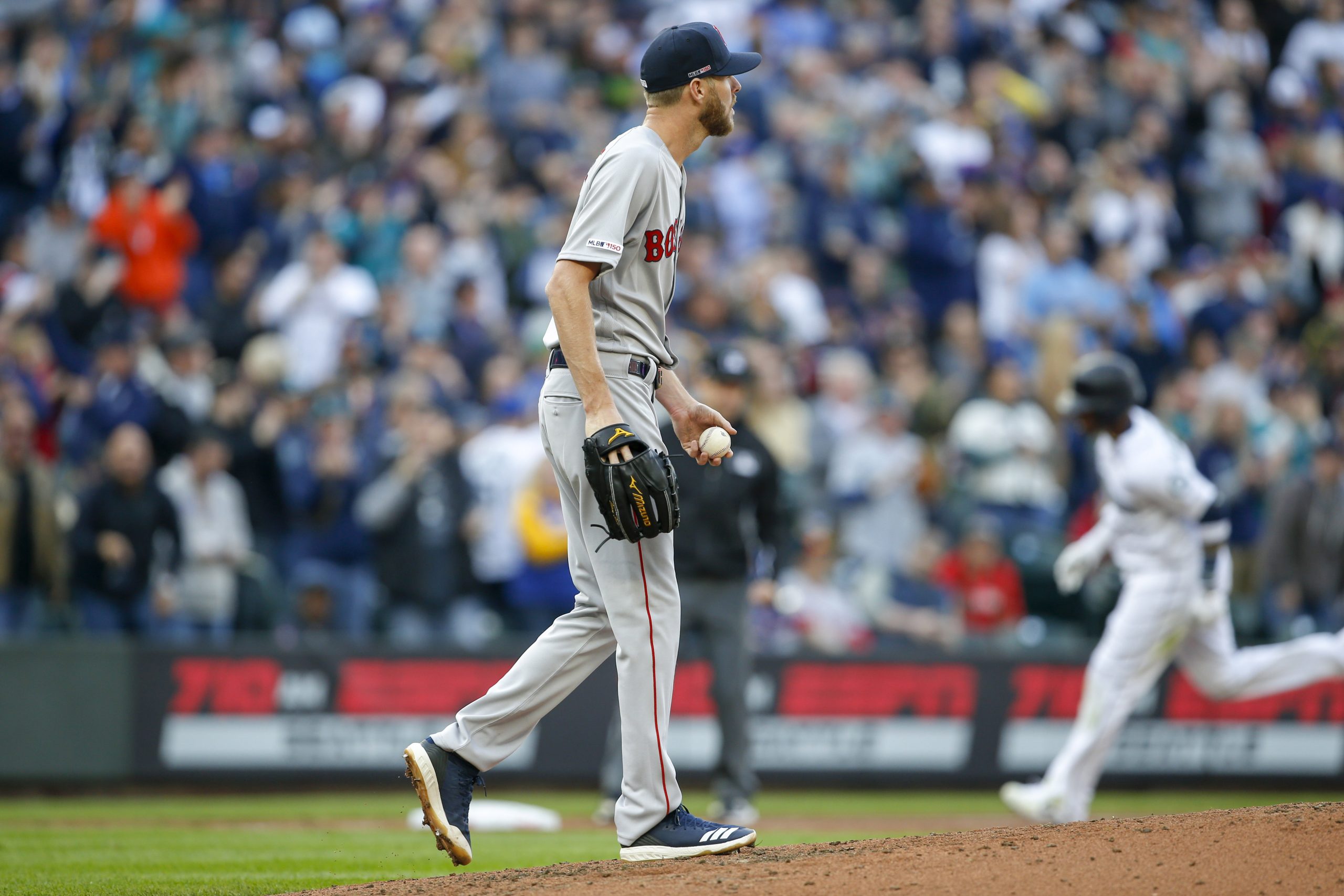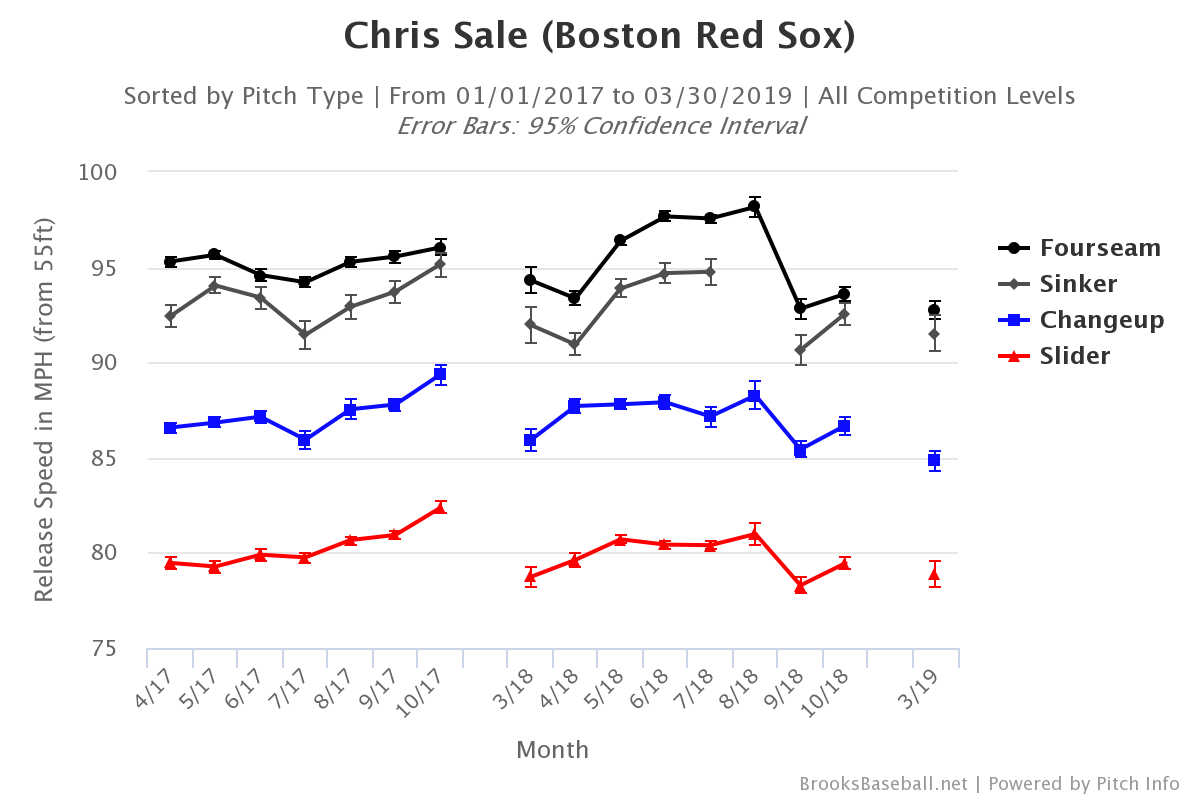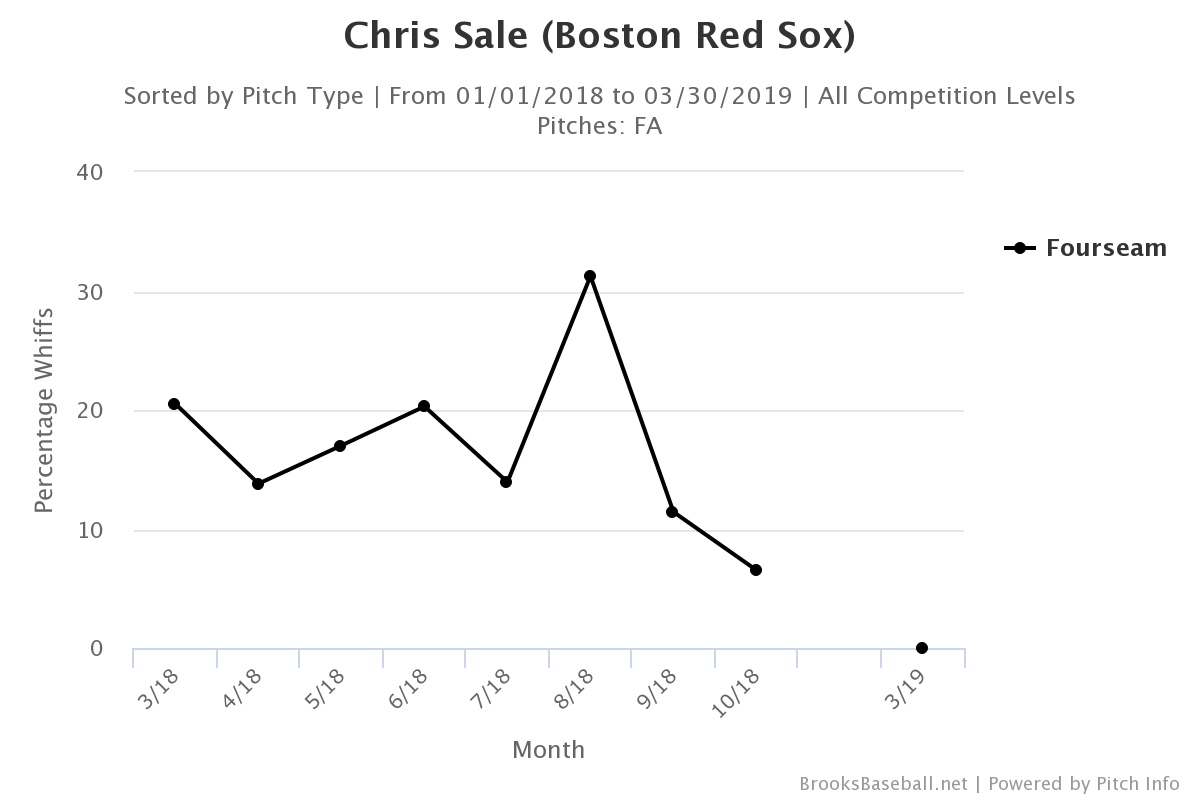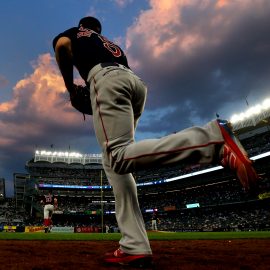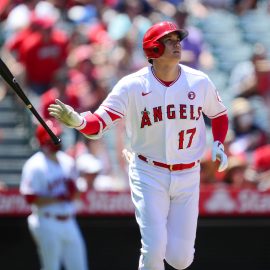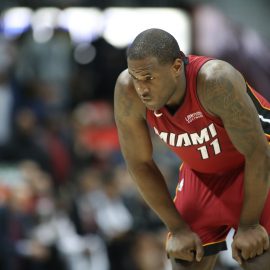On August 18th, 2018, then-Cy-Young-favorite Chris Sale went on the disabled list with mild shoulder inflammation. That would keep him out long enough that he couldn’t win the Cy Young Award that he’s just missed out on in every season since 2012. Once Sale came back in September, his fastball velocity progressively dropped in every start, but he never went back on the DL. Eventually, it all worked out, the Red Sox won the World Series, and Sale signed a $145 million extension less than a week before Opening Day.
Most people glanced over the drop in effectiveness with Sale and concluded that he was still dealing with the injury and would eventually be healthy for the playoffs. Some concluded that it was just a September thing, and Sale was taking it easy after throwing 200+ innings in just about every prior season. It wasn’t considered a for-sure long-term issue until the Mariners dominated against him on Opening Day, scoring 7 in just 3 innings against the perennial All-Star.
The most concerning thing might not be the result, but the underlying metrics that showed Sale’s velocity drop issue isn’t over quite yet. His fastball averaged 92.2 mph, which isn’t incredibly slow, but over 2 mph slower than previous seasons, and more in line with his September and October of 2018. His offspeed pitches also experienced similar drops. Maybe Sale’s shoulder injury never fully subsided. If he is still dealing with an injury, there is the risk that he will miss a major portion of the 2019 season, setting the Red Sox back in a major way in the middle of a tight division race with the Yankees.
Some have pointed out games in April of 2018 where he threw softer, but those were random one-game blips rather than over 5 straight starts following a DL-stint, so they clearly aren’t as noteworthy. Even though Sale typically throws softer in April as a whole, it has always still been harder than Thursday. The more concerning theory about Sale’s velocity drop is that this is a permanent decline, as 30-year-old pitchers (well, he didn’t turn 30 until after Thursday) with large workloads tend to experience at some point. If that’s the case, Sale’s extension looks like it could be a real problem for the Red Sox, as Sale is well worse than his actual prime.
If Sale never recovers in terms of strength, it takes a lot out of his game. There is a clear difference in his ability to miss bats with a fastball in the low 90s against mid-90s, as most pitchers also experience. Even if he doesn’t continue to drop lower than an average of 92, hitters in 2019 are able to hit that with ease and it will set Sale back from being an Ace.
As one of the best pitchers in the MLB, Sale clearly doesn’t just rely on velocity. He has gotten the 15th most value out of his slider among all pitchers in his career, and well as placing 9th with his changeup. He hasn’t walked more than 2 batters per 9 innings in a season since 2012, either, proving how important his pitch control is. However, a loss in velocity from just his fastball can make a difference there too, as batters can adjust to the devastating movement just a bit easier. It will also affect his ability to prevent free passes, as in just the 5 regular season starts since his injury, batters have swung at balls outside the zone less than before, and he has thrown 6% fewer pitches in the zone (a notable drop).
The best result for the Red Sox at this point might be that Sale ends up on the Injured List and bounces back after some time off. However, with his workload in the past and his age, it’s possible that this is a long-term problem. Pitchers tend to see their velocity drop off before the rest of their game declines, and looking at the pitch velocity from just a few games can be significant in terms of projecting for the future. It was a little surprising to see the Red Sox extend Sale not knowing how he would bounce back, and it’s looking as if it could be costly.
Add The Sports Daily to your Google News Feed!
